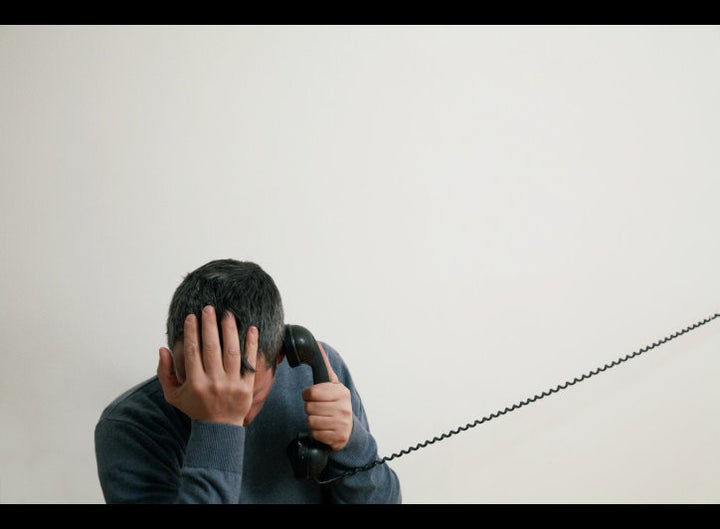
I went to a talk a couple of weeks ago by a psychologist who said that battered wives go back to the abusing husband on average 7 times, even when social services has already intervened and set everything up for her to leave for good.
Seven times. To someone who is guaranteed to beat you up. Does that make any sense?
You know what else doesn't make sense? BDSM dungeons, where people pay good money to get abused by some latex-clad lady.
Here's a rubric I made for making sense of seemingly bizarre human behavior. If I saw it pop up over and over again -- say, millions of people doing it over the course of decades and centuries -- chances are that those people weren't totally nuts or stupid. There must be some deep biological phenomenon at work here.
You probably know folks who are stuck in terrible relationships, or who keep on having the same bad relationship with differently-named people. Heck, you may even be that person who engages in the serial self-flagellation. You also know people who systematically sabotage their own happiness: by being habitually late; by engaging in self-pity; by putting themselves down.
Turns out there's a dark reason to all of this. Many people unconsciously want to be treated poorly, taken advantage of, or even outright abused. They are seeking to experience self-pity, pain and denigration.
In this case, the biological phenomenon is simple: pain and negative emotions activate the reward centers of the brain, causing unconscious addiction to those negative emotions.
Let me say that again, because it was really, really important:
Pain and negative emotions activate the reward centers of the brain, causing unconscious addiction to those negative emotions.
Ladies and gentlemen -- this is a whopper. People think of the reward centers of the brain as the "pleasure centers," so it makes sense to them when someone gets addicted to cocaine, or crack, or sex. Because cocaine makes your brain light up, makes you high, and then you want more. Duh.
That's the addiction that people know. But you don't need cocaine or meth or crack to create a self-reinforcing addictive circuit in the brain. Anything that activates the beta-endorphin or dopamine pathways will do.
It turns out that pain and negative emotions (e.g. self-pity, anger, guilt) also activate the beta-endorphin and dopamine pathways. Chronic jaw pain or painful thoughts light up those pathways just like the infamous addictive drugs do.
As a result, we can get addicted to those emotions. Now there aren't any thuggish-looking dealers, pieces of foil covered in white dust, or telltale tracks on the arm, so people can say, "Look, I'm okay! Really!"
My friends, the deadliest drug pusher of them all is the one that lives inside your head that no one can see, not even yourself.
The dopamine pathway activates in drive states. Drive states are necessary for survival: getting away from a threat, moving towards food, mating. Cortisol, the chief stress hormone, also mediates dopamine release.
So it makes sense that when you're stressed or in a flight-or-fight situation, your brain releases dopamine.
But why would it release beta-endorphins? Aren't those the feelgood chemicals you get when, say, you have a runner's high?
Turns out that beta-endorphins are also powerful analgesics. If you've ever had that runner's high, kept running for another five miles and came back home sore as hell, you know what I'm talking about.
So let's say you're in a flight-or-fight situation on the Savannah, oh, a million years ago, and you get injured. Then there is real survival value to postpone the distraction from the pain of the injury so you can win the fight or flee to safety. Now it makes a lot of sense that an analgesic would be released during a flight-or-fight stress response.
What's happening with negative emotions is that they tap into these same ancient survival circuits to get us a little bit of that reward drug. Make sense?
This is why the battered wife goes back to the abusive husband. This is why you pick the same abusive girlfriend over and over again. This is why cutters cut themselves. This is why people pay to go to BDSM dungeons. In sum:
People engage in physically or emotionally self-destructive behaviors to get an unconscious drug payoff.
So that's part of how we are complicit in our own suffering. We're actually engineering it.
- Get help. You can't do it alone -- lord knows you've tried. That's why the 12-step programs say you need to appeal to a higher power. As the Course in Miracles says, "Your best thinking got you here." So get help -- friends, family, professionals. Reach out -- physically, literally. Say, "I need help. Will you please help me?" Sure, it's humbling. But would you rather be dead? Because your addiction can and will kill you.
In upcoming articles, I'll talk more about the work of psychologist John Montgomery on the true self of emotional homeostasis and the false self of addictive alter ego.
Got a question? Write to me and I'll do my best to get back to you.
For a liberated, empowered path to love, check out The Tao of Dating for Women and The Tao of Dating For Men
For further thought-provoking ideas, visit the Tao of Dating and Awaken Your Genius blogs